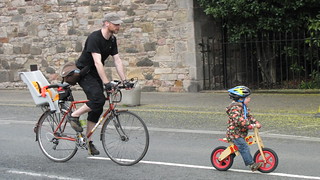@Iseewhatyou'retryingtodothere,butIwouldn't
bedoinganythingwarrantingpoliceintervention,
soyourattemptedcombinationofthelabelwithmyuser-name,whilstterriblyamusing,isinvalid Assuming that you were excluding various country-inhabitants such as those too young to understand traffic signals and those who genuinely think that road signs and signals only apply to motor vehicles but being willing to gather fresh data, I watched a popular road junction at lunchtime, though gave it four minutes rather than thirty seconds in order to see the full sequence. I have summarised the inferences about the lights' instructions which were able to be drawn from various vehicles' behaviours in this flowchart:

There are probably variations, such as the RLJ-ing cyclists' "proceed across anyway, but hunch the shoulders slightly to pretend you're invisible" technique, but no-one did that in this instance.
The wait time at purely pedestrian crossings isn't much. A light-controlled junction could conceivably introduce a 'delay' of a couple of minutes (if there are a couple of other directions of traffic to be signalled through as well as a short pedestrian phase) but I find it's easier and less stressy just to wait for the green rather than introduce an extra re-joining-the-traffic event after scampering across potentially live traffic streams (where it's not possible to saunter across on the pedestrian phase and then re-mount and head off before traffic starts steaming past again).


 posts
posts
